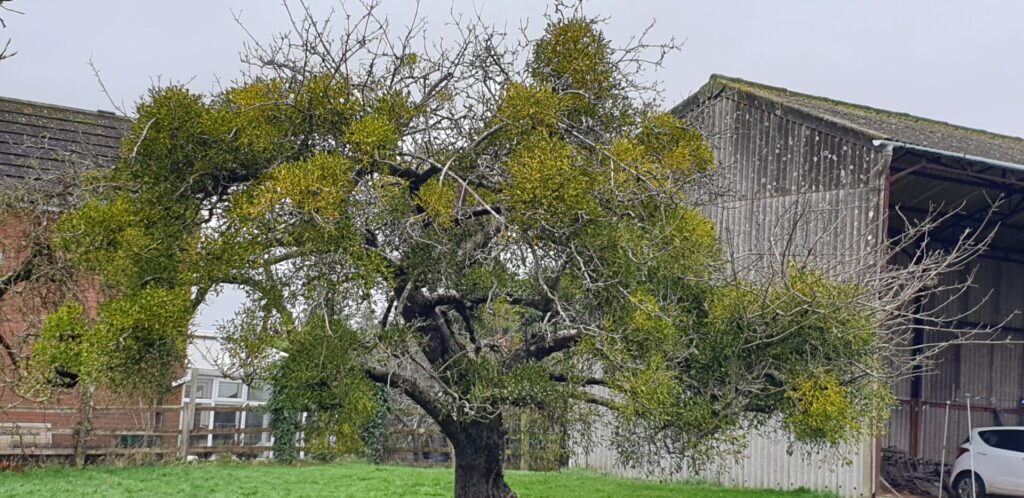
A dear friend suggested writing about this obscure plant: the Mistletoe, after seeing an appletree absolutely loaded with it!
He sent me a picture and then sent some more after he asked the householder to take a few close-ups and then he got kindly invited into his garden.
There were three apple trees in the garden: two covered in both male and female plants of mistletoe. Neither appeared to be suffering in any way and according to the householder, both are producing fruit. The third tree however, which he said has never had any mistletoe growing on it, had recently died!!
That is a bit of a mystery as surely it should have been the other way round?
The mistletoe is semi-parasitic (or hemi?) but also has some other interesting facts which you can read on the next page.
The mistletoe belongs to the Santalaceae or Bastard-toadflax family and the only one other member growing in the B.I.: Thesium humifusum or Bastard-toadflax will also be discussed!
Information and links from various websites and the Medicinal Flora of Britain and Northwestern Europe by J. Barker. The information on habitat and the Scientific Name link is from the Plant Atlas 2020 online. An interesting information sheet about the biodiversity of mistletoe in the U.K. was also used with thanks. See for the entire article: www.mistletoe.org.uk.
Pictures with thanks from Mike Poulton, Ian Trueman as well as from Wikipedia Commons.
Contents
Santalaceae or Bastard-toadflax family
Thesium humifusum or Bastard-toadflax
Viscum album or Mistletoe
Biodiversity value of Mistletoe
So which birds do take mistletoe berries?
